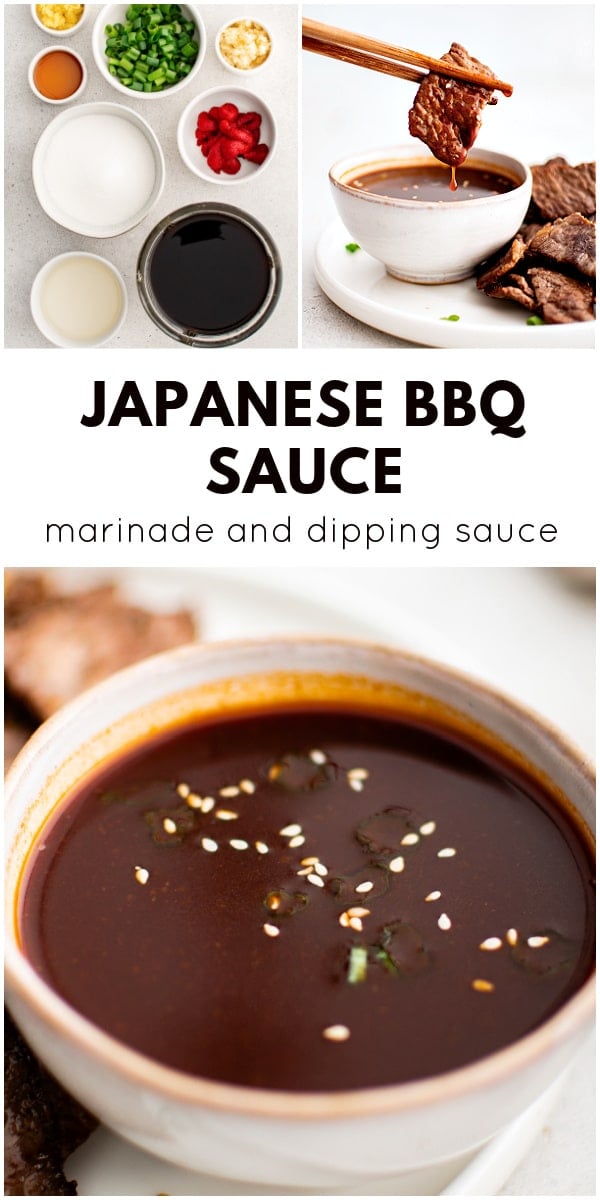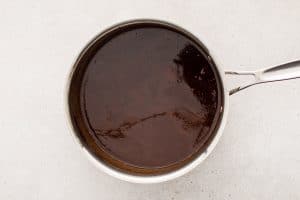This post may contain affiliate links. Please read our disclosure policy.
This homemade Japanese BBQ Sauce Recipe is sweet, savory, umami-rich, and super easy to make! Inspired by traditional yakiniku tare (焼肉のたれ), you can use it as a marinade, glaze, or dipping sauce for grilled beef, pork, or chicken.
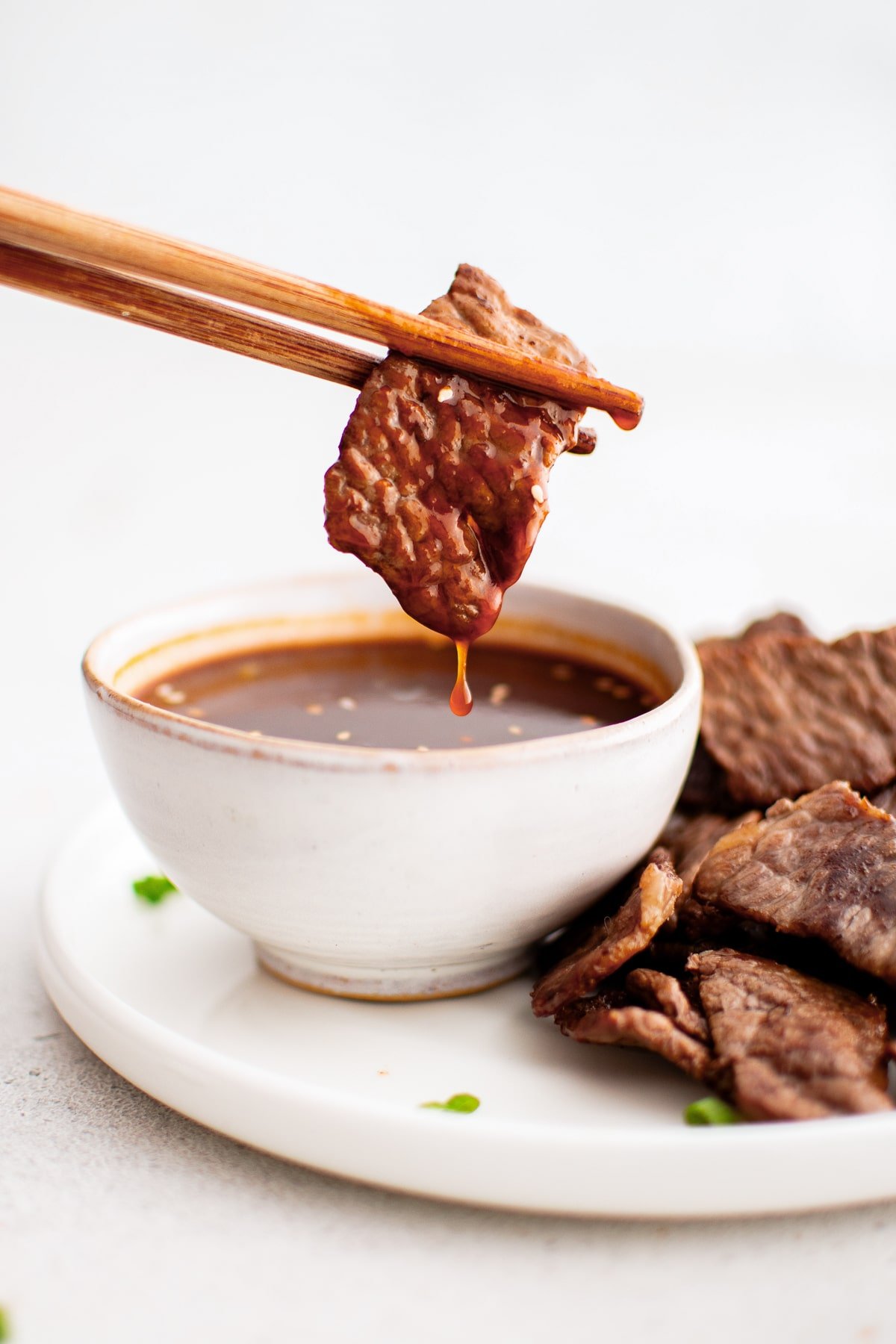
This Japanese BBQ Sauce Is Made For Dipping
Sweet, savory, a little garlicky, and full of rich umami goodness, this homemade Japanese BBQ sauce is super easy to make and packs serious, delicious flavor. It’s the perfect alternative to classic BBQ sauce and my go-to whenever I crave home-cooked Japanese BBQ. It only takes about 15 minutes to make, but the flavors are even better when it’s made ahead (which is just fine since it lasts up to a week in the refrigerator!) Use it as a marinade, glaze, or dipping sauce for grilled meats (like chicken yakitori) or anything else that could use a flavorful, umami-rich boost.
Table of Contents
About This Recipe: Tips For Success
Yield and servings: This recipe makes approximately 1 cup of sauce, or 8 (2 tablespoons) servings. The sauce has a very concentrated flavor, so a little goes a long way (especially when serving as a dipping sauce).
This is not an authentic recipe for yakiniku tare (焼肉のたれ). This Japanese BBQ sauce includes classic ingredients, such as soy sauce, sugar, mirin, ginger, garlic, and sesame oil. But unlike traditional versions, this one also includes tomato paste. The tomato paste adds umami depth, a thicker, smoother texture, and a subtle tang that helps balance the sugar’s sweetness.
You can substitute the tomato paste. You can swap the tomato paste with grated apple, Asian pear, or a spoonful of miso for more a traditional flavor.
The ingredients are blended then simmered. Blending the ingredients ensures everything is fully combined and smooth, especially the garlic, ginger, and green onions. This gives the sauce a more cohesive texture, making it ideal for dipping and glazing.
The sauce will continue to thicken as it cools. Gently simmering concentrates the flavor, mellows out the raw ingredients, and thickens the sauce. Plus, the heat helps dissolve the sugar. But, be careful not to over-reduce. Aim for a consistency that lightly coats the back of a spoon while warm.
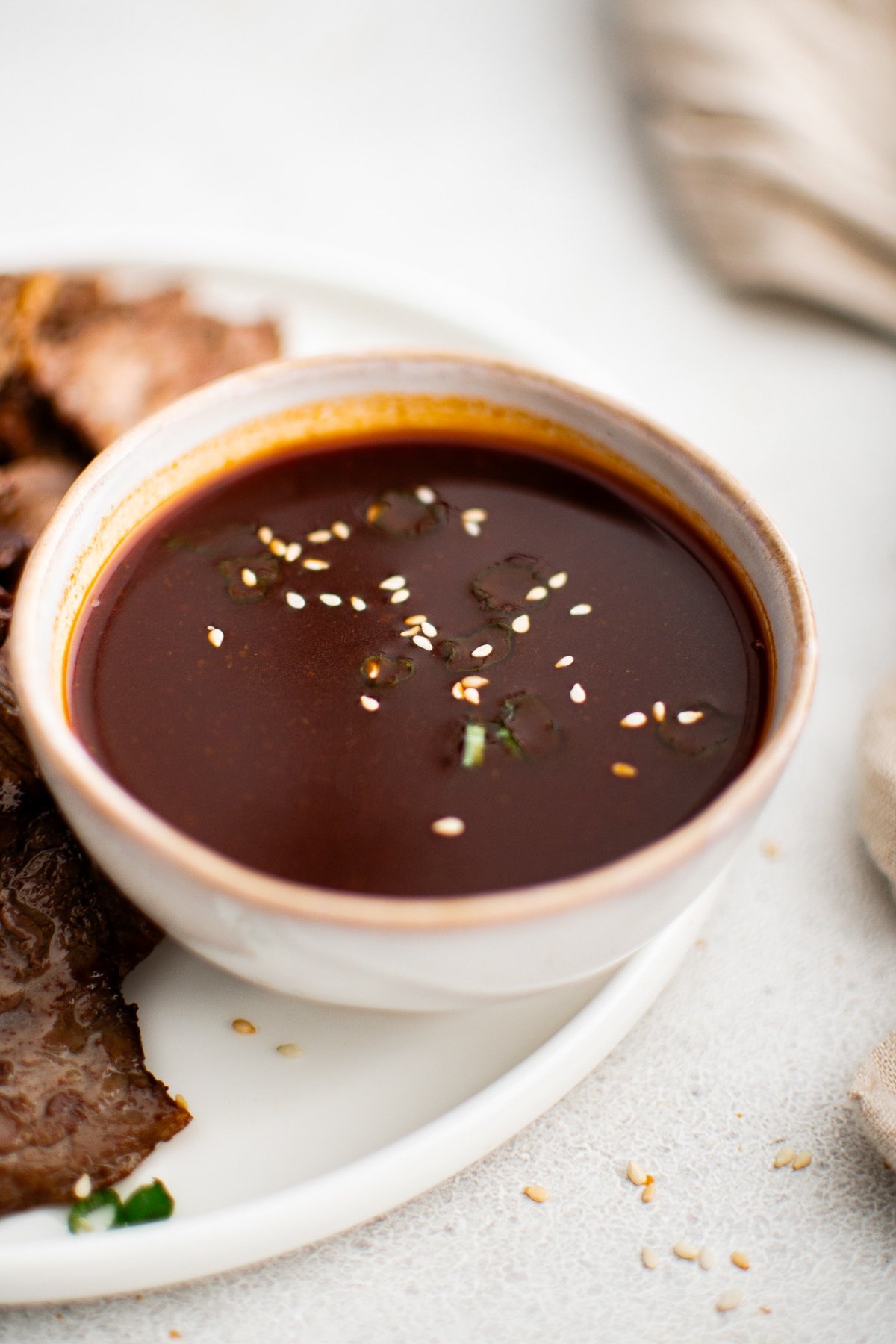
This Is What You Need To Make It
To make this Japanese BBQ sauce recipe, you will need the following ingredients: 1 cup of soy sauce (low-sodium), 2 tablespoons of tomato paste, 2 green onions, ⅓ cup of granulated sugar, 1 tablespoon of mirin (Japanese cooking wine), and 1 teaspoon each of freshly grated ginger, garlic, and toasted sesame oil. Possible substitutions include:
- Low-sodium soy sauce: Tamari (gluten-free) or coconut aminos (gluten-free, sweeter, but lower in sodium).
- Tomato paste: Grated Asian pear or apple (2–3 tablespoons), white or red miso (1–2 teaspoons), or ketchup (consider reducing the sugar slightly).
- Granulated sugar: Brown sugar, honey, or maple syrup.
- Mirin (Japanese cooking wine): 1 teaspoon rice vinegar + 1 teaspoon sugar, or dry sherry
- Fresh ginger and garlic: Ground ginger (1/4 tsp), or ginger paste and garlic powder (1/4 teaspoon), garlic paste, or roasted garlic.
- Toasted sesame oil: Regular sesame oil.
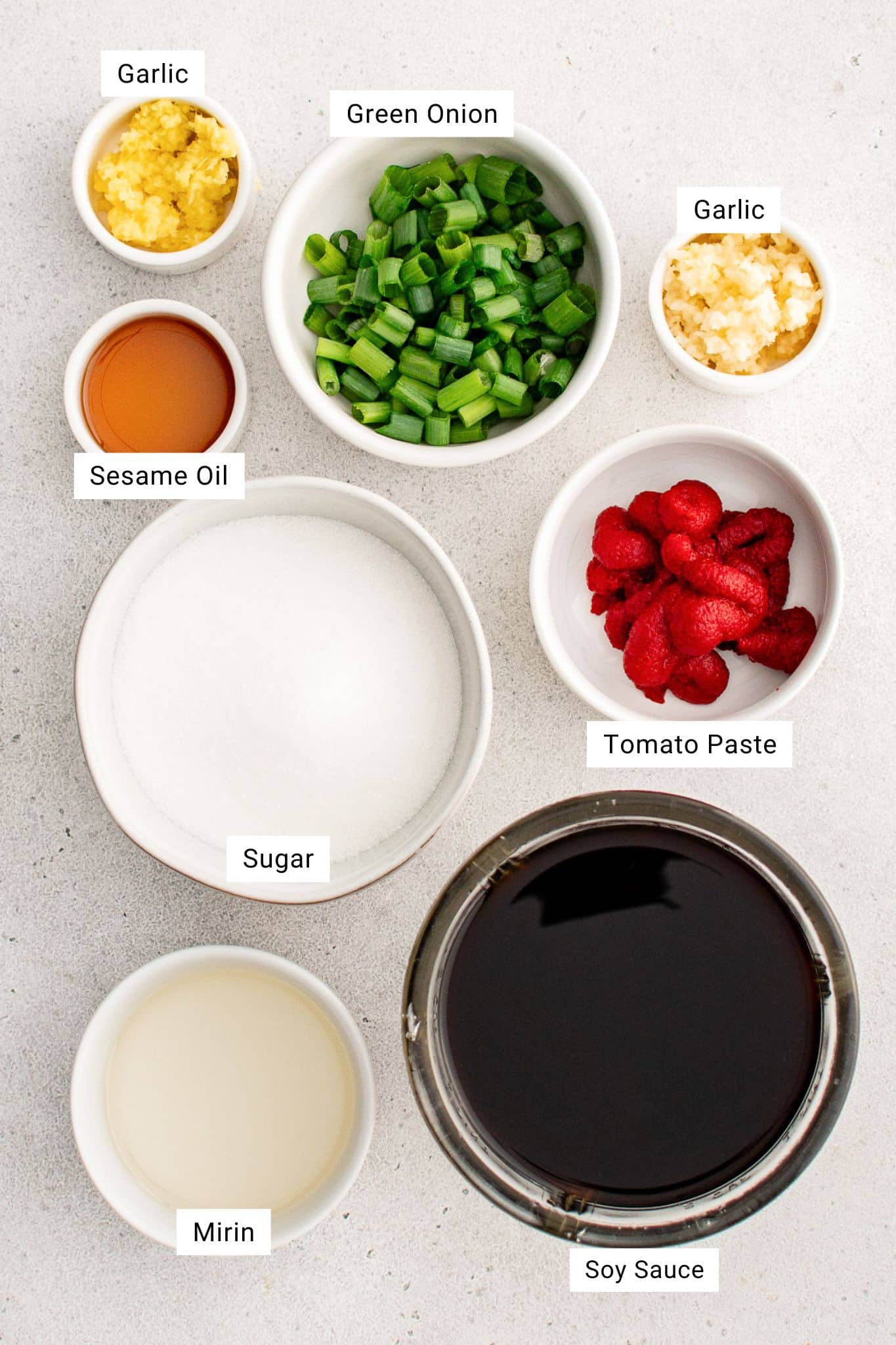
Delicious Variations
- Traditional tare-style: Swap the tomato paste for grated Asian pear or apple and add 1 teaspoon of miso paste for a boost of umami flavor.
- Spicy Japanese BBQ sauce: Add 1-2 teaspoons (or more!) gochujang, sriracha, or chili flakes. It adds a spicy sweetness that pairs especially well with beef, chicken thighs, and shrimp.
- Smoky fusion BBQ sauce: Add a drop of liquid smoke or smoked paprika (start with just a pinch and add more to taste). The result is a cross between Japanese BBQ sauce and American BBQ sauce. Perfect for ribs!
- Gluten-free Japanese BBQ sauce: Use tamari or coconut aminos instead of soy sauce, and double-check that your mirin (or mirin alternative) is gluten-free.
Ways to Use Japanese BBQ Sauce
Dipping Sauce. The most classic use is to serve it in small bowls alongside thinly sliced grilled beef or pork (yakiniku-style), chicken yakitori or chicken skewers, grilled veggies or tofu.
Marinade. One of the BEST marinades you can make, use it for proteins like chicken thighs, pork belly, beef short ribs, or tofu. Marinate for at least 30 minutes (or overnight for even deeper flavor) and reserve some fresh sauce for dipping.
Stir-Fry Sauce. Drizzle a few tablespoons over your favorite stir-fried chicken, beef, or veggies. It’s also delicious over your favorite Asian noodle dishes like spicy ramen noodles, stir fried udon noodles, or Asian garlic noodles.
Glaze. Brush a little of the sauce on your favorite meats in the final few minutes of grilling or roasting for the perfect sticky, caramelized, flavorful finish.
Have any questions? Drop me a message in the comment section below! I’m happy to help. And, if you enjoy this homemade Japanese BBQ Sauce Recipe, please rate it with some STAR LOVIN’ so other readers know to try it too! Tag me at #theforkedspoon. I’ll be sure to share! Thank you!
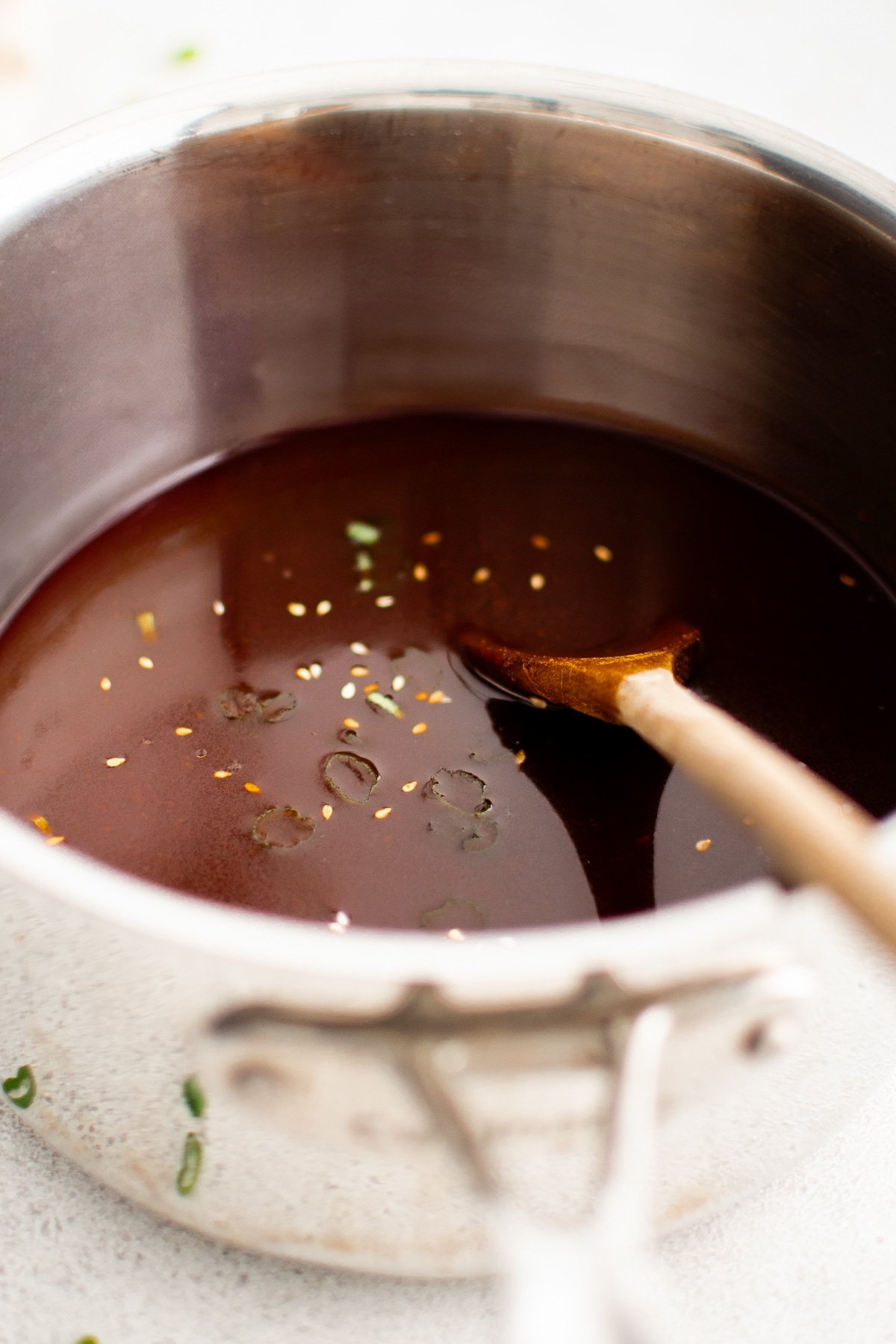
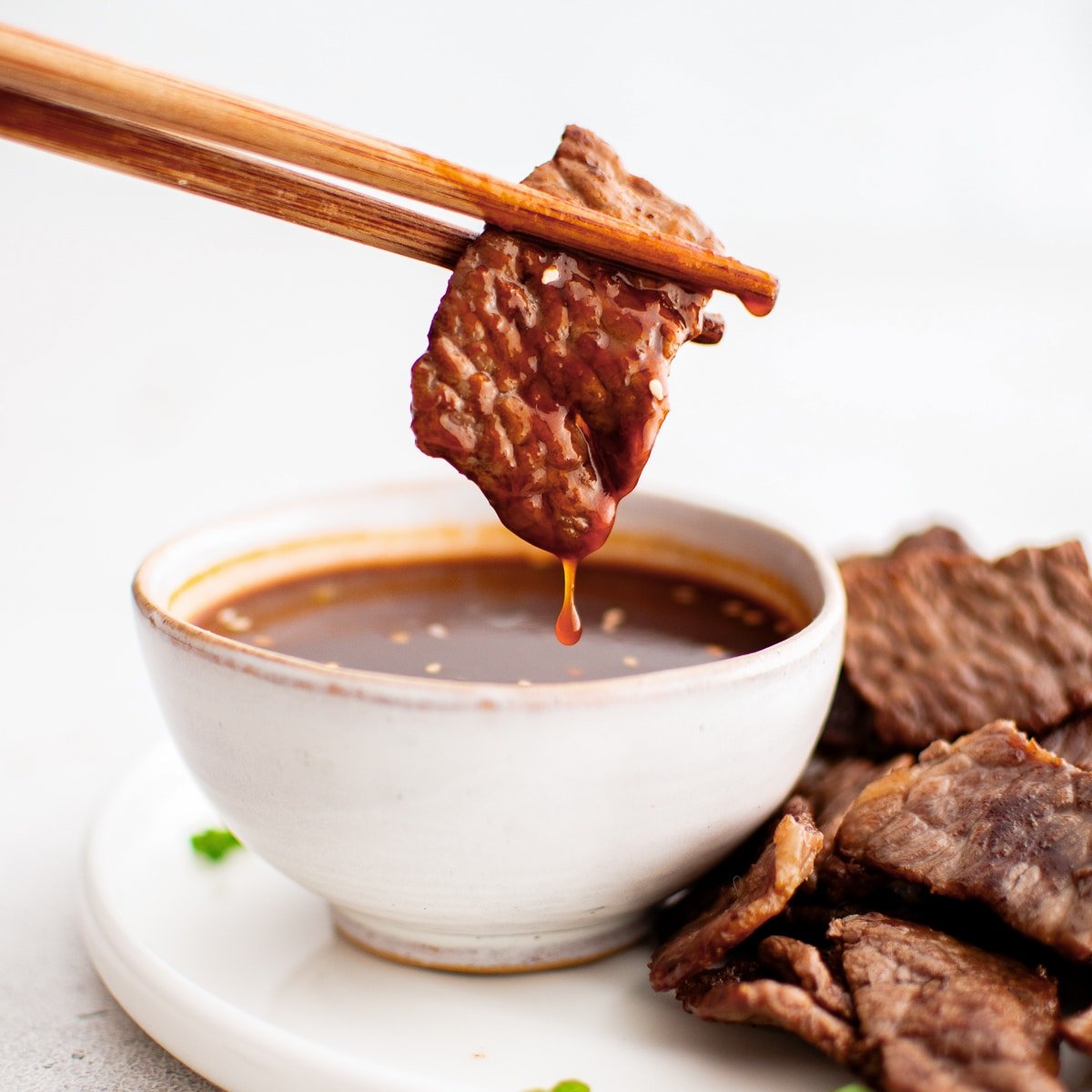
Japanese BBQ Sauce (Yakiniku Tare) Recipe
Ingredients
- 1 cup low-sodium soy sauce
- 2 tablespoon tomato paste, see notes
- 2 green onions, sliced
- ⅓ cup granulated sugar
- 1 tablespoon mirin
- 1 teaspoon freshly grated ginger
- 1 teaspoon freshly minced garlic
- 1 teaspoon toasted sesame oil
Instructions
- Add the ingredients to a blender. Or a small food processor.
- Blend the ingredients. Blend on high until the mixture is smooth and the green onions are fully incorporated.
- Simmer and thicken. Pour the blended mixture into a medium saucepan and set it over high heat. Bring the sauce to a boil, then immediately reduce the heat to low. Simmer the sauce gently for 10–15 minutes, stirring occasionally, until it thickens slightly and coats the back of a spoon. Keep in mind it will thicken a bit more as it cools.
- Garnish and Serve: Remove the sauce from heat and let it cool slightly. Garnish with white sesame seeds and sliced green onions, if desired.
Notes
- Food Safety Tip: If you’ve used the sauce as a marinade for raw meat, do not reuse it unless it’s been cooked to a boil first.
- Soy sauce: Tamari (gluten-free) or coconut aminos (gluten-free, sweeter, but lower in sodium).
- Tomato paste: Grated Asian pear or apple (2–3 tablespoons), white or red miso (1–2 teaspoons), or ketchup (consider reducing the sugar slightly).
- Granulated sugar: Brown sugar, honey, or maple syrup.
- Mirin (Japanese cooking wine): 1 teaspoon rice vinegar + 1 teaspoon sugar, or dry sherry
- Fresh ginger and garlic: Ground ginger (1/4 tsp), or ginger paste and garlic powder (1/4 teaspoon), garlic paste, or roasted garlic.
- Toasted sesame oil: Regular sesame oil.
- For a more authentic yakiniku no tare, swap the tomato paste for 2-3 tablespoons of grated apple or Asian pear or 1 teaspoon of miso paste (white miso is milder and sweeter; red miso is more robust).
- Gluten-free: Use tamari or coconut aminos instead of soy sauce and double check that your mirin (or mirin alternative) is gluten-free.
Nutrition
Nutrition information is automatically calculated, so should only be used as an approximation.
